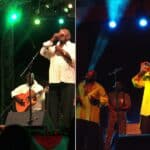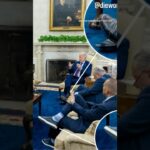In case you weren’t aware, the first presidential debate of the 2012 election season was held earlier this week. President Barack Obama squared off against former Massachusetts governor Mitt Romney in what I assume was a no-holds barred discussion of all manner of things of import, including foreign policy, the economy, healthcare and the iOS 6 maps fiasco.
I wrote “assume” because I didn’t watch it. I chose that time to catch up on the previous evening’s episode of Sons of Anarchy (fantastic show, by the way), because watching biker gangs go at it is simply far more entertaining television. That being said, I did what I usually do in such situations – I tuned into Twitter to see what, if anything, of relevance was being discussed. After all, I wouldn’t want to miss a Clint Eastwood “empty chair” moment, would I?
So I guess I shouldn’t have been surprised when my Twitter stream quickly flooded with posts from various denizens of Sesame Street. First there was Big Bird, then Elmo, followed by Ernie, Burt and Cookie Monster. I didn’t see Snuffleupagus, but I’m sure he was there as well.
I don’t follow any of these people…err, characters…by the way. But, due to a simple comment from Mitt Romney, who apparently loves Big Bird but inferred that he may cut funding to PBS, these folks made my Twitter stream blow up. In a matter of minutes.
This got me thinking. Not about the election, of course (I was still too invested in trying to figure out how Jax was going to get the rest of SAMCRO out of the current mess they were in), but about how social media has, seemingly overnight, become the most immediate form of mass communication we have available to us.
There’s a reason why people like me use Twitter and other social sites (Google+ included!) as our primary source of news. These places offer an immediacy that is simply not found anywhere else. Not even on news websites. Those are fast, but social feeds are instant.
Let’s put it this way: Twitter and other forms of social media are to the 2008 versions of news sites as the 2008 versions of news sites were to newspapers or the televised evening news. With social media, we’re not just in a news cycle, but a hyper news cycle, one that moves extremely quickly.
And not only does it move quickly, I would submit that, in some cases, it moves even faster than news actually happens. I know this is probably getting kind of meta, but hear me out: social media is not only reporting the news, it’s creating it. The moment Big Bird and his Muppet cronies took to Twitter and Facebook during the debates, they not only started commenting on the news — they became part of it. In fact, the very next day I saw stories on the Big Bird Twitter frenzy in places like USA Today, Washington Post and elsewhere. Jim Henson would be so proud!
What does this all mean? Well, for me, it means that I was still able to catch up on my show while not missing out on the most discussed moment of the debate. But it also means that, from a PR perspective, there are several different ways that individuals and organizations can effectively use social media channels. Places like Twitter and Facebook can be used not only to spread the word about something and instigate conversations, but can actually be a single force through which to develop a news cycle. And yes, we still need traditional means of communication, such as press releases and interviews, but there are many, many more options now available. Social media is most certainly one of the most powerful.





